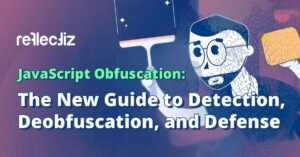7 Best GRC Tools for Watertight Web Security

GRC stands for governance, risk, and compliance, three intersecting sets of requirements that businesses need to not just manage but optimize. Managing them effectively is a bare minimum requirement, but to truly take control of these areas and thrive, many organizations with a web presence have turned to dedicated GRC tools. These suites have emerged to help decision-makers balance the need to meet multiple regulatory requirements with managing their business processes while minimizing risk.
In this article, we look at what GRC tools do and recommend our seven favorites for your business in the context of web security.
Why is GRC important for web security?
GRC tools offer a structured approach to managing an organization’s overall governance, enterprise risk management, and regulatory compliance requirements. While often discussed in broader business contexts, GRC is important for web security specifically because websites and web applications are often the primary interface between an organization and the outside world, making them prime targets for cyberattacks. The consequences of falling victim to cybercrime can be incredibly costly – the average global cost of a data breach in 2024 hit $4.88M, a 10% increase over 2023 and the highest total ever. Add the cost of lost sales due to reputational damage, data protection fines, and legal action by victims, and the sky’s the limit in terms of potential financial losses.
Let’s break down the three components and their relevance to web security:
Governance
Governance is an umbrella term that refers to the processes and structures an organization puts in place to direct and control its activities. In the context of web security, governance defines roles, responsibilities, and decision-making processes related to protecting web assets. This includes establishing security policies, defining acceptable use guidelines, and setting up procedures for incident response. Strong governance ensures that web security is treated as a strategic priority and that everyone understands their role in maintaining a secure online presence.
Risk Management
In the web security context, this involves identifying, assessing, and mitigating potential threats to an organization’s web assets. It includes conducting regular vulnerability assessments, penetration testing, and security audits to identify weaknesses in web applications and infrastructure. Risk management also involves developing strategies to mitigate these risks, such as implementing firewalls, intrusion detection systems, and other security controls. Effective risk management helps organizations proactively address vulnerabilities before they can be exploited by attackers.
Compliance
This focuses on adhering to relevant laws, regulations, and industry standards related to web security. Various regulations, such as PCI-DSS for handling payment card information, HIPAA for protecting healthcare data, and GDPR for protecting personal data, mandate specific security controls for web applications. Compliance also involves internal policies and standards that organizations adopt to ensure consistent security practices. Maintaining compliance helps organizations avoid regulatory fines and legal penalties, protect their reputation, and build trust with their customers.
Specialized GRC tools or all-in-one solutions?
All-in-one GRC tools cover all three areas, while specialized ones cater to particular use cases. Many GRC platforms offer comprehensive suites that cover a wide range of functions, including risk management, policy management, compliance management, audit management, and incident management. They provide a centralized view of an organization’s risks, controls, and compliance status, making it easier to manage and streamline processes across different departments.
Specialized GRC Tools
Some GRC tools are designed to excel in specific areas or industries. For example:
- Hyperproof focuses on IT compliance and risk operations, offering over 110 pre-built templates for various compliance regimes.
- LogicGate Risk Cloud is known for its flexibility and customization options, making it suitable for organizations with unique risk management needs.
- Drata specializes in automating compliance for frameworks like SOC 2 and ISO 27001, making it ideal for tech companies.
Choosing the right GRC Tools
Finding the best GRC tool for your organization depends on your specific needs:
- Large Enterprises might benefit from all-in-one solutions that provide a holistic view and integrate multiple functions.
- Small to Medium-Sized Enterprises (SMEs) might prefer specialized tools that address their particular compliance or risk management challenges without overwhelming them with unnecessary features.
Top 7 GRC Tools
Since business needs can vary widely across industries, in no particular order, these are the top 7 GRC tools we recommend.
RSA Archer Overview
 Description
Description
RSA Archer is an integrated GRC tools platform designed to help organizations manage their risk and compliance needs effectively. It provides a comprehensive solution that integrates various risk management processes, enabling organizations to streamline their operations and improve efficiency.
Who It’s Designed For
RSA Archer is designed for large enterprises across various sectors, including financial services, energy, and utilities, that require robust risk management and compliance solutions.
Pros
Integration Capabilities: RSA Archer seamlessly integrates with various enterprise systems, enhancing business processes and reducing manual data entry.
Cons
User Interface Challenges: Many users find the interface not intuitive or user-friendly, particularly for non-IT staff, which can hinder usability.
Customer Opinion
Users appreciate its comprehensive risk management capabilities and customizable dashboards. One user mentioned, “RSA Archer is a great tool for findings management, security assessments, and overall Governance.”
LogicManager Overview
Description
LogicManager is a GRC tools platform that helps organizations streamline their risk management processes, enabling efficient data aggregation, reporting, and compliance management.
Who It’s Designed For
LogicManager is designed for various industries, including financial services, healthcare, education, and government, making it suitable for organizations of different sizes.
Pros
Robust Reporting Features: LogicManager excels in risk reporting, allowing users to generate comprehensive reports quickly and efficiently.
Cons
Complexity for New Users: Some users report that the platform can be complex to navigate initially, requiring a learning curve for new users.
Customer Opinion
Customers praise its ease of use and excellent customer support. One review highlighted that, “LogicManager has the ability to be molded to the needs of its users.”
Riskonnect Overview
Description
Riskonnect is a comprehensive GRC platform that integrates risk management, compliance, and audit processes into a single solution, providing organizations with strategic analytics and insights.
Who It’s Designed For
Riskonnect is tailored for industries such as healthcare, retail, insurance, financial services, and manufacturing, making it suitable for organizations that require detailed risk management capabilities.
Pros
Integrated Analytics: The platform offers built-in analytics that provide actionable insights, helping organizations visualize and manage risks effectively.
Cons
Implementation Complexity: Some users have noted that the implementation process can be complex and time-consuming, requiring significant resources.
Customer Opinion
Users appreciate its integrated risk management capabilities and user-friendly interface. One customer noted, “Riskonnect provides advanced tools to help risk managers identify, assess, and make more informed decisions about risk.”
SAP GRC Overview
Description
SAP GRC is a robust suite of tools designed for large enterprises, providing real-time visibility and control over business risks and compliance requirements through integrated risk management solutions.
Who It’s Designed For
SAP GRC is specifically designed for large enterprises that need comprehensive risk management and compliance solutions, particularly those already using SAP systems.
Pros
Real-Time Analytics: The platform offers advanced analytics capabilities, allowing organizations to monitor risks and compliance in real time.
Cons
Costly Implementation: The implementation and licensing costs can be high, making it less accessible for smaller organizations.
Customer Opinion
One user said, “Solid solution for Access Management and Financial Controls, but outdated user interface and cumbersome administration.”
SAI360 Overview
Description
SAI360 is a GRC tools suite from SAI Global that focuses on compliance management, risk assessment, and monitoring third-party access, providing a comprehensive solution for organizations of all sizes.
Who It’s Designed For
SAI360 is suitable for both small businesses and large enterprises, making it versatile for various organizational needs.
Pros
User-Friendly Interface: The platform is noted for its intuitive design, making it easy for users to navigate and manage compliance tasks.
Cons
Limited Customization: Some users have expressed a desire for more customization options to tailor the platform to their specific needs.
Customer Opinion
Customers said, “SAI360 combines risk assessment, incident management, and reporting all in one platform,” and, “UI is very user-friendly and pleasing to the eye. Configuration possibilities are very open-ended and allow for heavy customization.”
MetricStream GRC Overview
Description
MetricStream GRC is a flexible platform that provides organizations with tools for enterprise and operational risk management, compliance management, and audit management, focusing on user-specific needs.
Who It’s Designed For
MetricStream is designed for organizations with diverse user requirements, including auditors, IT managers, and business executives across various industries.
Pros
Highly Customizable: The platform allows for significant customization, enabling organizations to tailor the GRC tools to their specific operational needs.
Cons
Complex User Experience: Some users find the interface complex, which can lead to a steeper learning curve for new users.
Customer Opinion
A customer commented: “Product features are good, it is available on premise and on the cloud, helps manage enterprise risk, cybersecurity risk, compliance and audit, third party risk management etc.”
Reflectiz Overview
Description
Reflectiz is a digital security platform designed to enhance website security by providing continuous monitoring of third-party applications and their behaviors. It creates a comprehensive digital application inventory, allowing organizations to identify and manage risks associated with external applications without requiring any code modifications on their websites.
Who It’s Designed For
Reflectiz is primarily aimed at mid-sized businesses and large enterprises that rely heavily on third-party applications and need to ensure robust security measures for their digital assets.
Pros
Comprehensive Visibility: Reflectiz offers immediate visibility into all external applications used on a website, helping organizations detect risky behaviors and vulnerabilities.
No Code Required: The platform operates without the need to add any code to the website, simplifying implementation and reducing potential disruptions.
Proprietary Security Sandbox: Reflectiz utilizes a unique security sandbox to create a complete inventory of digital applications in the web supply chain, enhancing risk management capabilities.
Flexible risk: Users can customize alerts in line with their specific risk appetite
PCI Dashboard: Dedicated dashboard for easier PCI-DSS compliance and reporting.
Cons
Limited Pricing Information: There is a lack of detailed pricing information available, which may make it difficult for potential users to assess the cost-effectiveness of the platform.
Customer Opinion
Information Security Executive Lance Wright said, “Being responsible for thousands of e-commerce stores used by millions of shoppers I have to make sure we are well-secured and have the ability to make dynamic changes. The Reflectiz solution offers quick deployment and for me, as a CISO, it also helps me sleep well at night.”
Conclusion
Even if you opt for more generalized GRC tools, we think you’ll find that Reflectiz is still going to complement their capabilities. It’s unmatched at protecting your web infrastructure and addressing risk and compliance issues, covering the gaps that they can’t fill. Sign up today and discover how this uniquely effective web exposure management solution can boost your organization’s web security.
Subscribe to our newsletter
Stay updated with the latest news, articles, and insights from Reflectiz.
Your Website looks great!
But what’s happening behind the scenes?
Discover your website blind spots and vulnerabilities before it’s too late!







